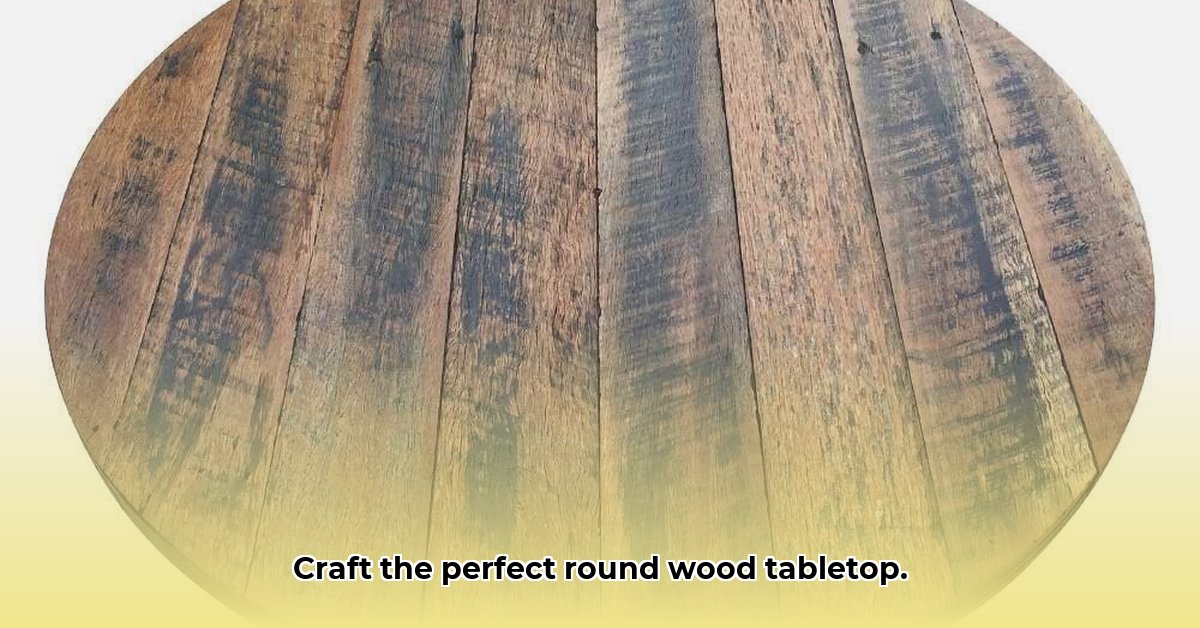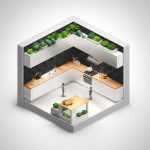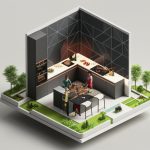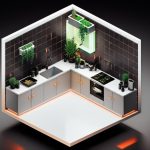Dreaming of a beautiful round wood table gracing your home? You’re in the right place! This comprehensive guide provides everything you need to find the perfect round wood table top, regardless of your DIY experience. From selecting the ideal wood type and size to choosing the perfect finish and installation tips, we’ll cover it all. We’ll also guide you on where to buy, how to spot a great deal, and how to ensure sustainability. For a wide selection, check out this round table top resource. Let’s dive in and bring your dream table to life!
Your Comprehensive Guide to the Perfect Round Wood Tabletop
Finding the perfect round wood tabletop can feel overwhelming with endless options. But worry no more! This guide simplifies the process, walking you through everything from material selection to safe installation. Get ready to unleash your creativity and build the table of your dreams!
1. Picking the Perfect Material: Solid Wood vs. Laminate
The first major decision is whether to go with solid wood or laminate. Both offer unique aesthetic and practical benefits. Let’s delve into the pros and cons of each material to help you make an informed decision, considering both aesthetics and budget.
| Feature | Solid Wood | Laminate |
|---|---|---|
| Cost | Generally more expensive. The price varies widely depending on the species of wood, with hardwoods like walnut and cherry commanding a premium. | More budget-friendly. Laminate construction utilizes a thin decorative layer over a composite core, significantly reducing material costs. |
| Durability | Exceptional durability. Solid wood can last for generations with proper care. Scratches and dents can often be repaired through sanding and refinishing. | Moderate durability. Laminate is resistant to scratches and stains but is more susceptible to chipping and water damage. Repairs are more difficult and often less seamless. |
| Appearance | Natural variations in grain, color, and texture provide unique character and warmth. Solid wood brings an unparalleled sense of authenticity to a space. | Consistent look with a vast array of styles and colors available. Laminate can mimic the appearance of various wood species and other materials, offering design flexibility. |
| Maintenance | Requires regular care, including oiling, waxing, or sealing, to protect the wood and maintain its beauty. | Easier to clean and more resistant to spills. A simple wipe-down is usually sufficient. |
| Sustainability | Can be a sustainable choice if sourced from responsibly managed forests. Look for certifications from organizations like the Forest Stewardship Council (FSC). | Sustainability depends on the materials used in the core. Consider laminates made with recycled content and low-VOC adhesives. |
| Workability | Easier to work with for advanced DIYers. Allows for customization through shaping, carving, and staining. | More challenging to modify. Cutting and shaping laminate require specialized tools to prevent chipping and ensure clean edges. |
Solid wood exudes undeniable charm and character. Each piece is unique, telling a story through its grain patterns and natural imperfections. It brings warmth and a sense of history to your home. Laminate offers consistency and practicality. It’s a great option for busy households or spaces where durability and easy maintenance are paramount. The best material hinges on your individual needs, lifestyle, and budget.
2. Sizing Up Your Space: Measuring for Success
Before you even start browsing, arm yourself with a measuring tape! Accurate measurements are essential for ensuring a perfect fit. Consider the table’s intended location and how you plan to use it. A large dining table for family gatherings demands more space than a small side table for holding a lamp.
- Measure the Room: Determine the overall dimensions of the room where the table will reside.
- Consider Traffic Flow: Ensure ample space for comfortable movement around the table. Aim for at least 36 inches of clearance between the table and walls or other furniture.
- Visualize the Table: Use painter’s tape to mark out the table’s footprint on the floor. This provides a visual representation of its size and helps you assess whether it fits comfortably in the space.
- Think About Seating: If the table is for dining, consider the number of people you want to accommodate. Allow approximately 24 inches of width per person.
Accurate measurements minimize potential space conflicts. A table that’s too small will feel lost, while one that’s too large will overwhelm the room. Invest time in accurate measurements to optimize the spacing around your table.
3. Choosing Your Finish: Style and Longevity
The finish is where your creativity shines! It transforms the look and feel of your tabletop, impacting both its aesthetics and maintenance requirements.
- Stained: A classic choice that enhances the wood’s natural grain. Stains are available in a vast spectrum of shades, allowing you to match your existing decor or create a contrasting focal point.
- Painted: Unleash your inner artist! Paint allows you to make a bold statement, transforming a simple table into a fun and lively focal point. Opt for a durable, easy-to-clean paint for long-lasting results. Consider using milk paint for a vintage-inspired look or chalk paint for a matte finish.
- Oiled: Oil finishes provide a natural, low-sheen look that brings out the wood’s beauty. They penetrate the wood, providing protection from within. Oiled finishes require regular reapplication to maintain their protective properties.
- Varnished/Lacquered: Varnish and lacquer create a durable, protective coating that is resistant to scratches and water damage. They are available in various sheens, from matte to high gloss.
- Raw Wood (Unfinished): Embrace the natural beauty of the wood in its purest form. This option requires more upkeep but showcases the wood’s unique character. Consider using a wax or sealant to protect the wood from moisture and stains.
Match the finish with your existing decor to achieve a harmonious blend. Remember to consider the level of maintenance required for each finish.
4. Edge Styles: The Finishing Touch
The edge of your tabletop is a design detail that adds personality and character.
- Live Edge: Showcases the wood’s natural, unprocessed edge, creating a rustic and organic look. Live edge tables are perfect for bringing a touch of nature indoors.
- Bullnose: A classic rounded edge offers a smooth, soft feel. It’s timeless, versatile, and complements almost any decor style.
- Bevel: An angled edge adds sophistication and modernity. Beveled edges are often used in contemporary designs.
- Square Edge: A clean, minimalist edge that is perfect for modern and industrial styles.
- Ogee: A decorative edge with a concave curve flowing into a convex curve. Ogee edges add a touch of elegance and formality.
Different edge styles contribute to the aesthetic, resulting in a well-thought-out table design.
5. Where to Buy and What to Look For: Finding Reputable Sellers
Find round wood tabletops online at major marketplaces, specialty shops, and local lumberyards and furniture stores.
- Online Marketplaces: Offer a vast selection and competitive prices. Read product descriptions carefully and check user reviews before making a purchase. Pay attention to shipping costs and return policies.
- Specialty Shops: Focus on high-quality materials and craftsmanship. They may offer custom sizing and finishing options.
- Local Lumberyards: A great option for sourcing solid wood tabletops. You can inspect the wood in person and get expert advice on selecting the right type and grade.
- Furniture Stores: May offer a limited selection of round wood tabletops, but you can see and feel the products before buying.
Remember to check for ethical certifications, particularly for sustainable sourcing. Do you prioritize custom design or off-the-shelf convenience?
6. DIY Installation: A Quick Overview (or Seek Professional Help!)
Attaching a tabletop to a base isn’t overly complex, especially with the wealth of online tutorials. However, if you’re not comfortable with DIY projects, it’s always best to seek professional help.
- Gather Your Tools: You’ll need a drill, screws, measuring tape, and a level.
- Prepare the Base: Ensure the base is stable and level.
- Position the Tabletop: Center the tabletop on the base.
- Attach the Tabletop: Use screws to attach the tabletop to the base. Be sure to use the correct length screws to avoid penetrating the top of the table.
- Check for Stability: Ensure the table is stable and doesn’t wobble.
A properly installed tabletop ensures its stability, durability, and safety.
7. Sustainable Sourcing: Making Eco-Conscious Choices
Choose companies that use sustainably harvested wood. Look for certifications that confirm responsible forestry methods, such as the Forest Stewardship Council (FSC) certification. Consider the environmental impact of sourcing your wood.
- FSC Certification: Ensures that the wood comes from responsibly managed forests.
- Recycled Content: Look for tabletops made from reclaimed wood or recycled materials.
- **Low-VOC Finishes
- Colorful Backsplash Ideas: Brighten Your Kitchen With Tile - November 9, 2025
- Black Backsplash Ideas: Stylish Kitchen Transformations to Inspire You - November 8, 2025
- Dark Backsplash Ideas: Drama and Depth for Your Kitchen - November 7, 2025










